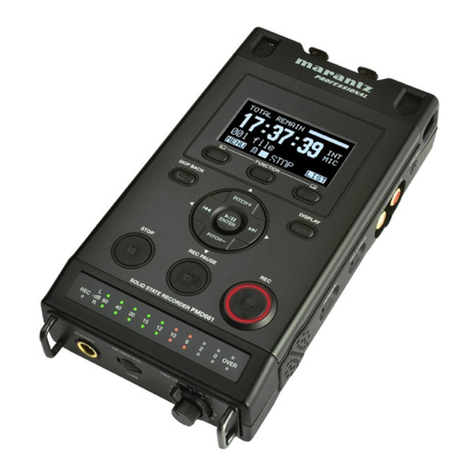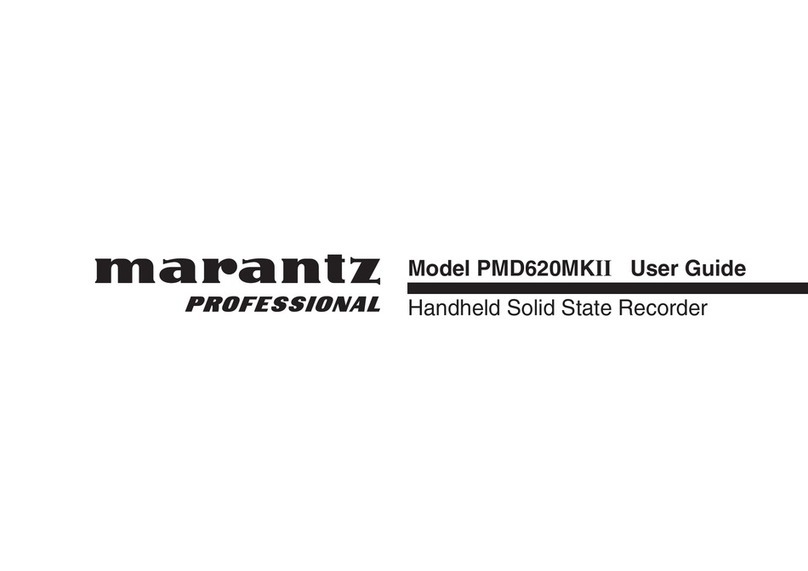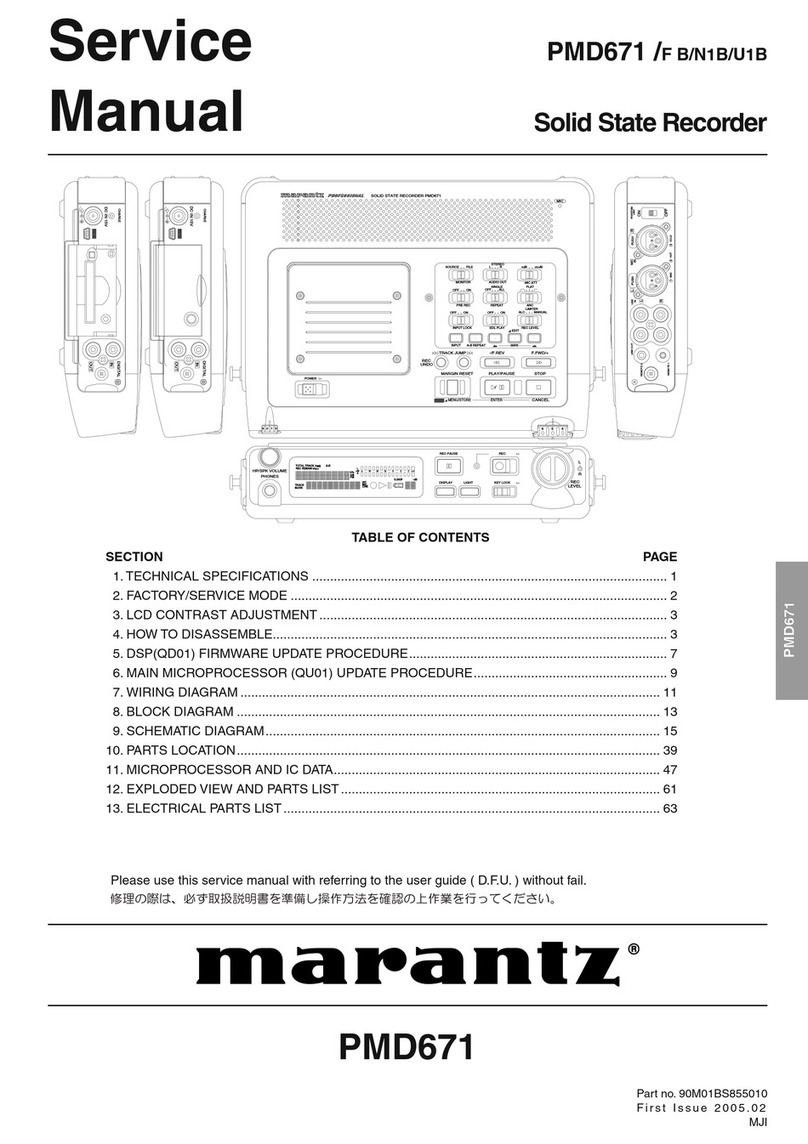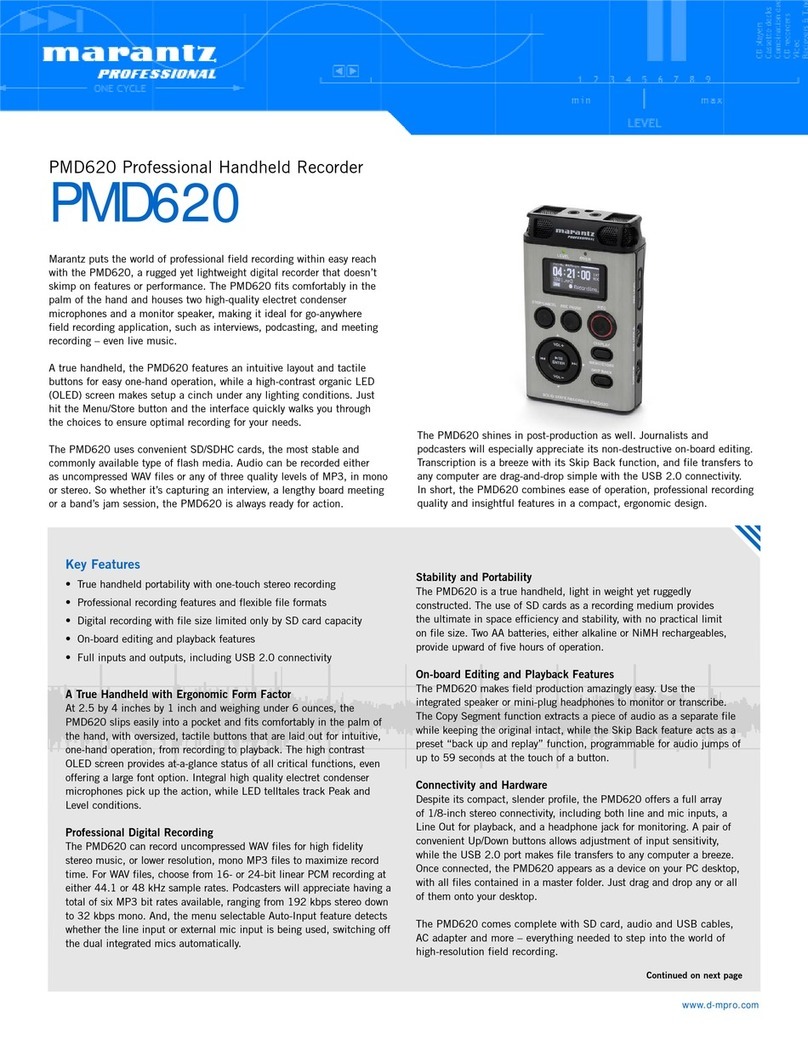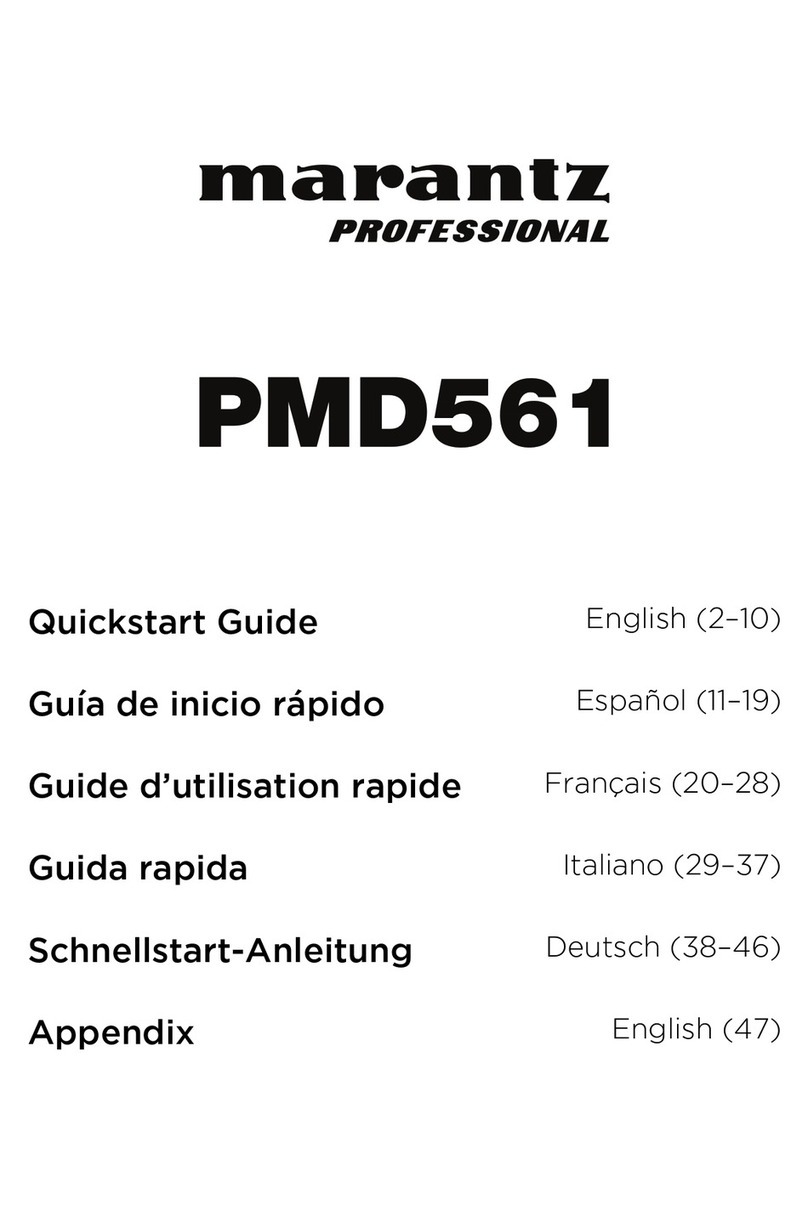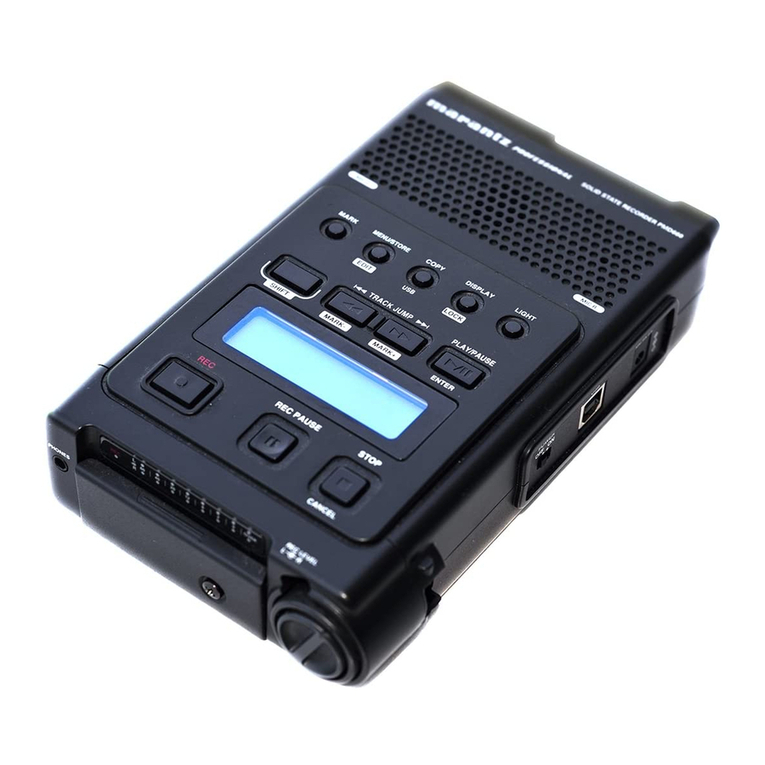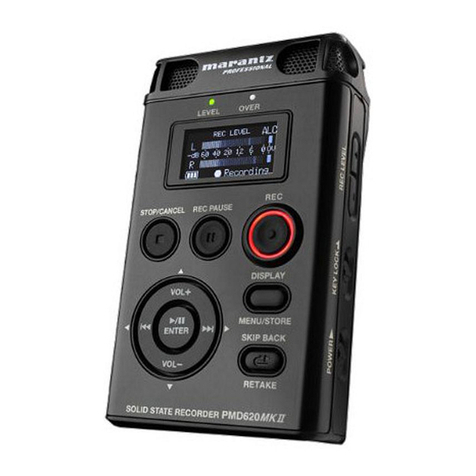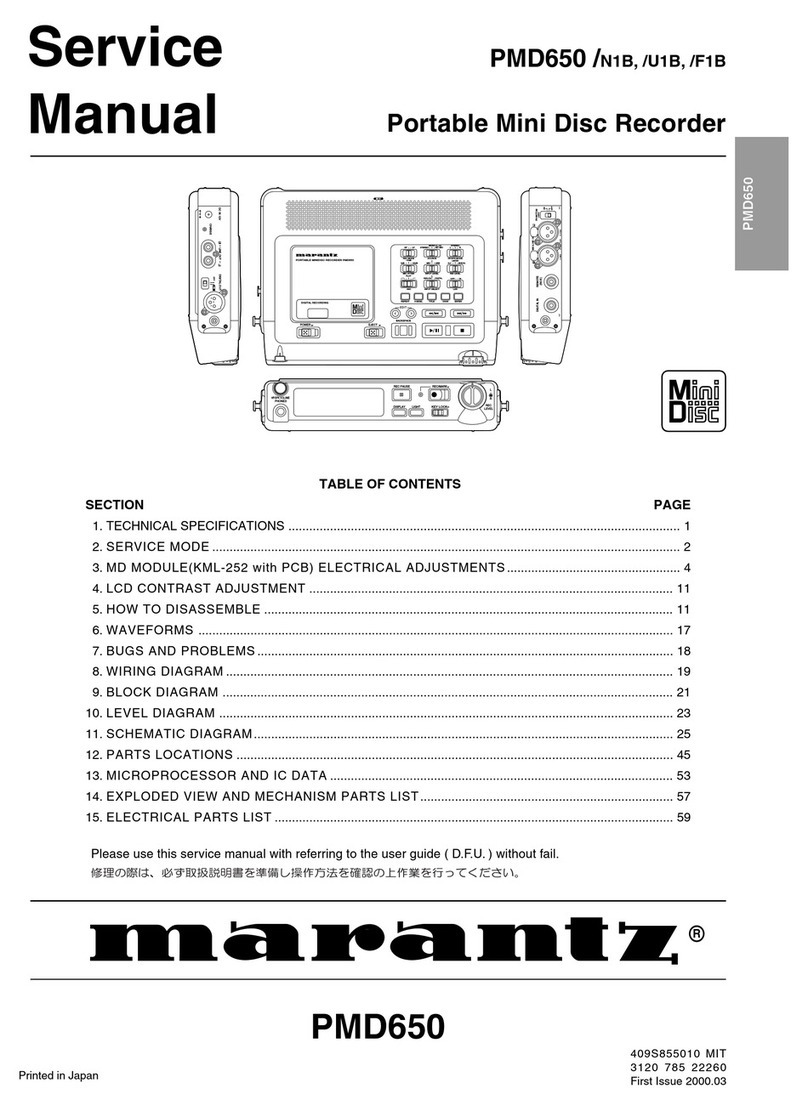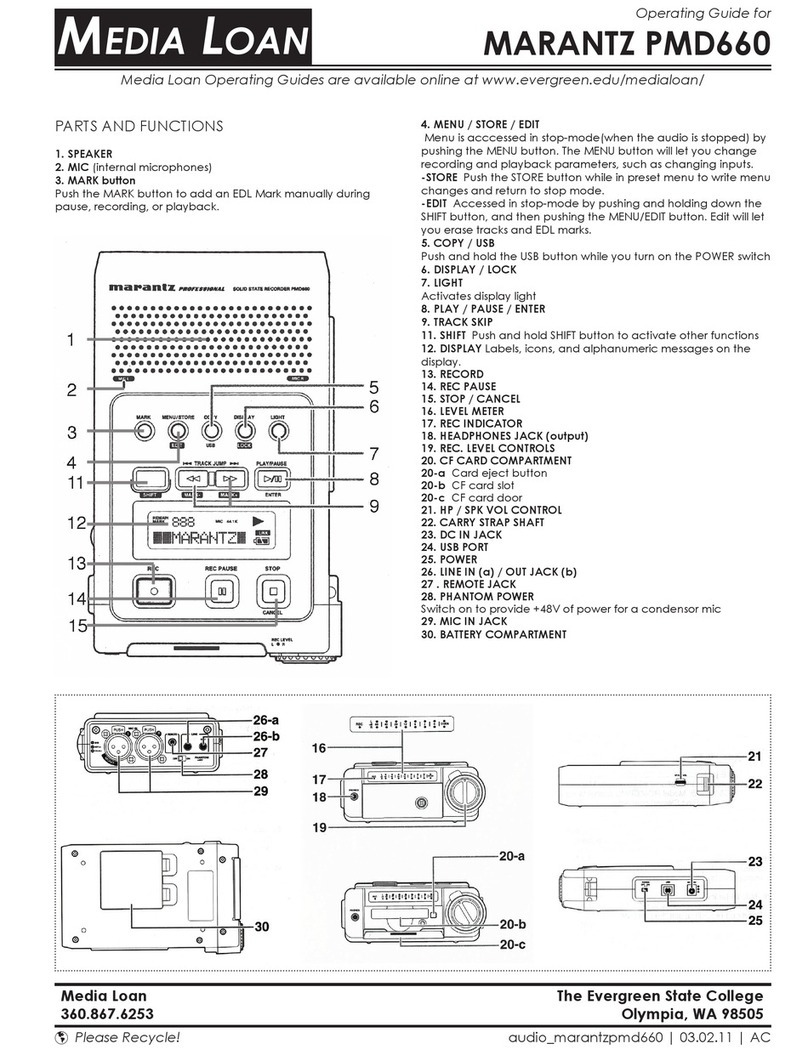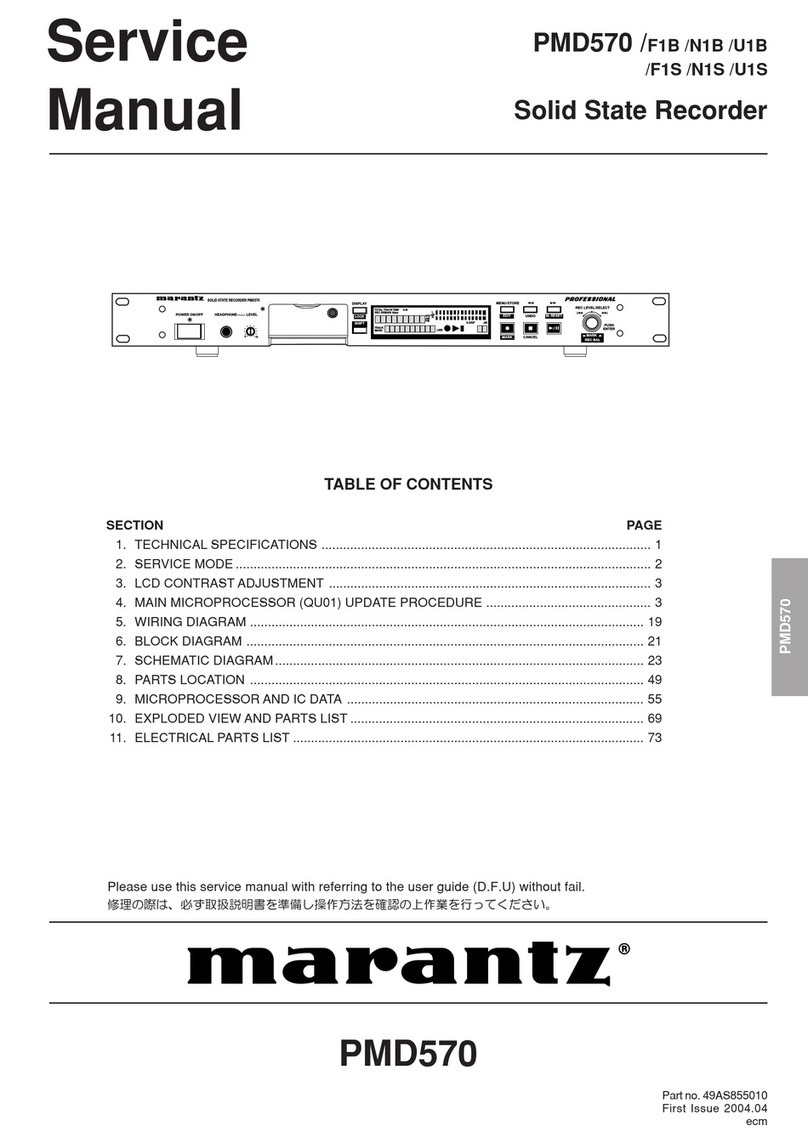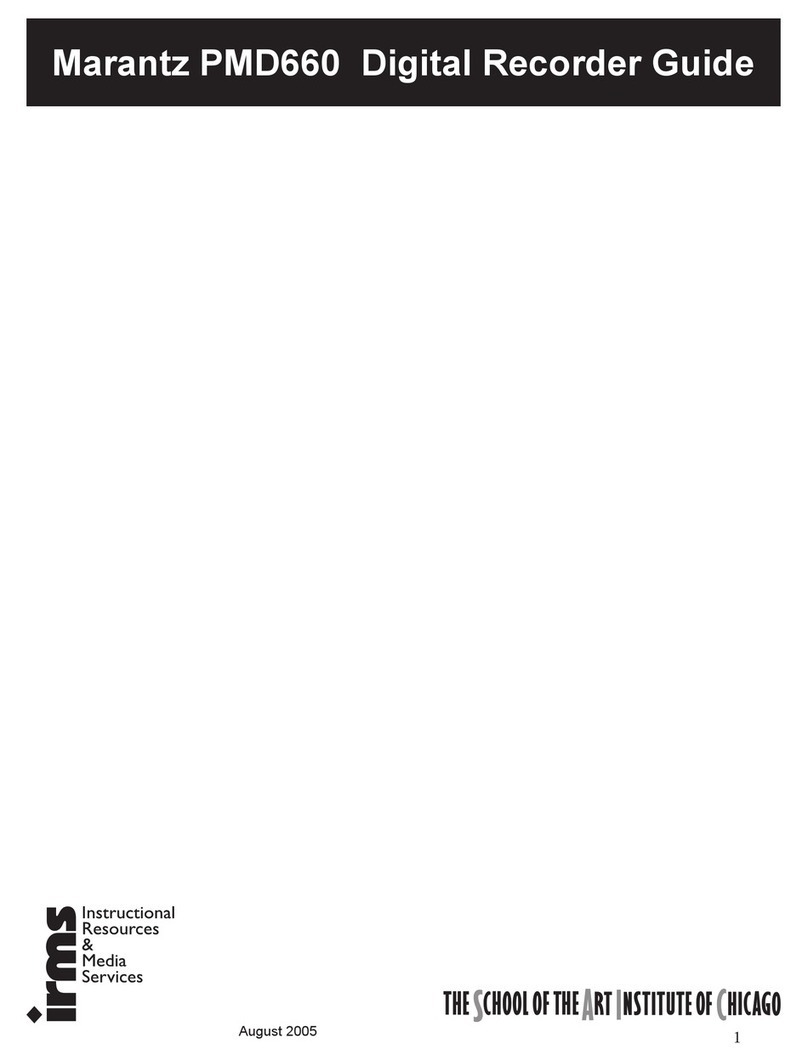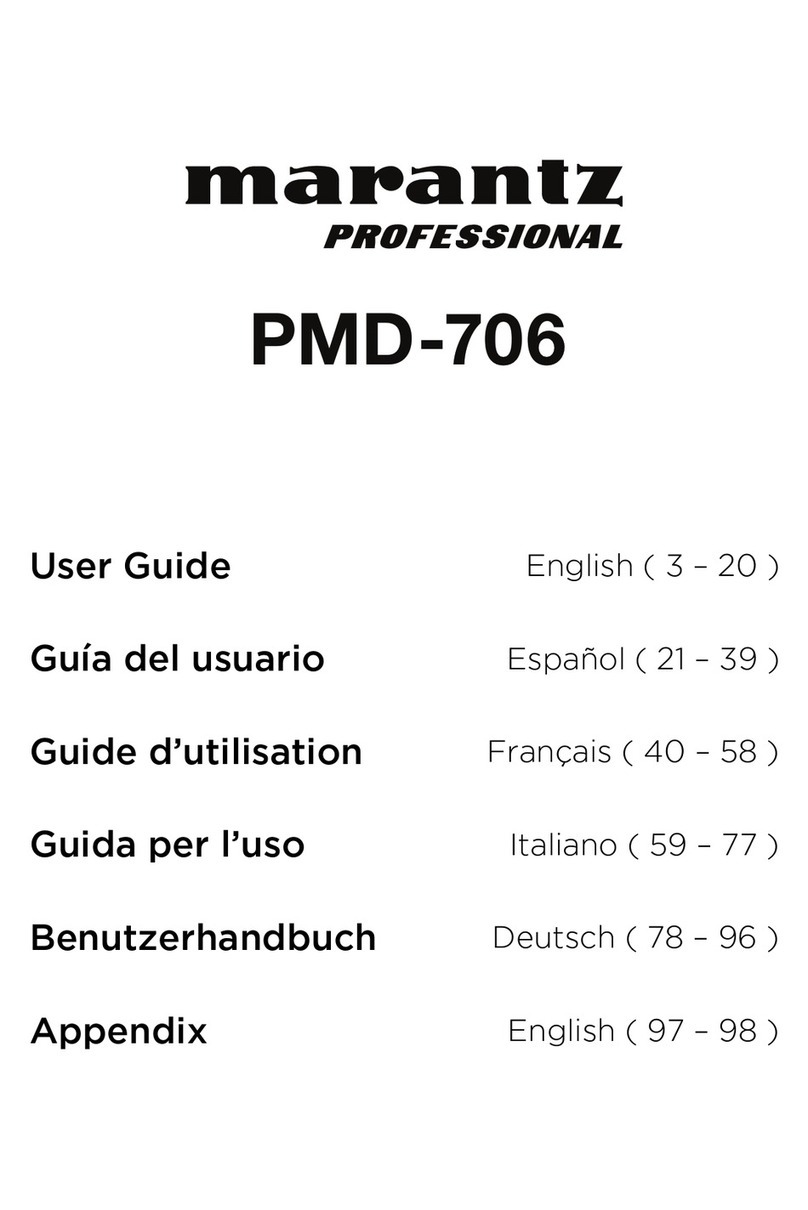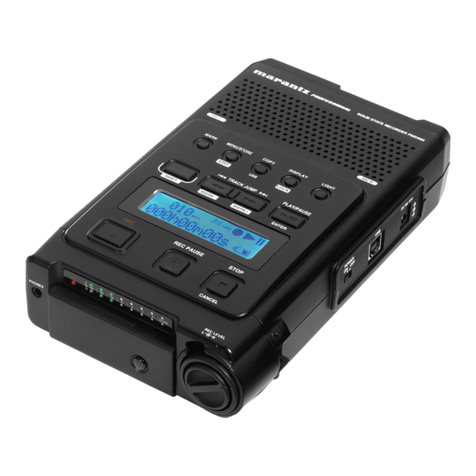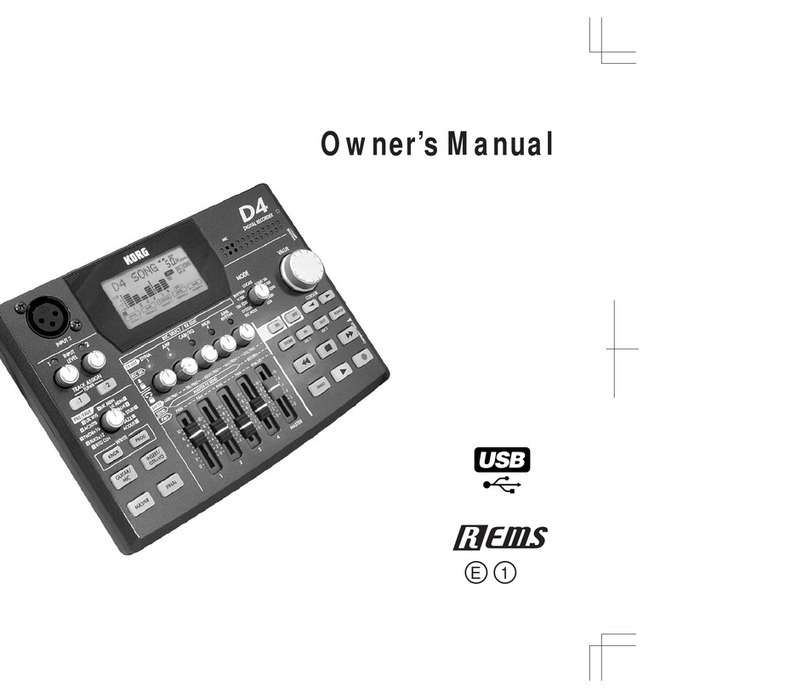1
SETTING UP
INTRODUCTION
Thank you for your purchase of the Marantz
Professional PMD680 PC Card Recorder. The PMD680 is
the next generation of porta le digital recorders that
ridge the gap etween real-time audio recording and
computers — while keeping the size and functionality of
our renowned porta le cassette and MiniDisc recorders.
The PMD680 has een designed as a field acquisition
tool. This means that the unit itself is designed to record
audio in a computer compati le file format. The audio
files are then meant to e transferred to a computer for
editing or transmission.
The recording medium of the PMD680, PCMCIA
compati le PC Cards, allows plug-and-play
compati ility with desktop and laptop computers. Flash
PC Cards are ased on flash memory technology that
features no moving parts and is not affected y
movement and temperature. Flash memory cards are
availa le through most computer and digital
photography products resellers. For a complete list of
approved cards for the PMD680, please refer to the
Marantz Professional we site at www.marantz.com.
The MP2 (MPEG1 layer2) file format that is supported
y the PMD680 is a worldwide standard for compressed
digital audio storage and transmission. Many play ack
and editing systems are availa le commercially and
through the Internet. For more information on MP2
ased play ack and editing systems, please consult your
dealer.
Also supported y the PMD680, PCM (Pulse Code
Modulation) is the most widely used format for coding
uncompressed digital audio. The PCM system is used
on CD players, DAT recorders, and on computer editing
programs that support Wave (.wav) files. Recording in
the PCM format will provide the most universally
accepted storage format ut comes with the limitation
that it uses a lot of memory very quickly.
USING THIS MANUAL
Please read these operating instructions carefully. We
recommend that you read the entire user guide efore
you connect or operate the unit.
After you have reviewed the contents this manual, we
suggest that you make all system connections efore you
attempt to operate the unit.
FOREWORD
This section must e read efore any connection is made
to the mains supply.
WARNINGS
Do not expose the equipment to rain or moisture.
Do not remove the cover from the equipment.
Do not push anything inside the equipment through
the ventilation holes.
COPYRIGHT
Recording and play ack of any material may require
consent. For further information refer to the following:
—Copyright Act 1956
—Dramatic and Musical Performers Act 1958
—Performers Protection Acts 1963 and 1972
—any su sequent statutory enactments and orders
PRECAUTIONS
The following precautions should e considered when
operating the equipment.
When setting the equipment ensure that :
– air is allowed to circulate freely around the equipment
– the equipment is on a vi ration free surface
– the equipment will not e exposed to interference from an
external source
– the equipment will not e exposed to excessive heat, cold,
moisture or dust
– the equipment will not e exposed to direct sunlight
– the equipment will not e exposed to electrostatic discharges
• In addition, never place heavy o jects on the equipment.
• If a foreign o ject or water does enter the equipment, contact
your nearest dealer or service center.
Features
• Monaural (1 track) audio recording and play ack
• Recording onto various types of approved PC Cards
- Please refer to the Marantz Professional we site at
www.marantz.com for the complete list of approved
cards
• Two different recording formats:
- Compressed recording using MPEG1 Layer2 (MP2)
- Uncompressed recording using 16- it/48kHz Pulse
Code Modulation (PCM)
• MS-DOS and Windows compati le file system
• Selecta le file types:
- Wave (.wav)
- Broadcast Wave (. wf)
- Raw MP2 (.mp2)
• Manual, manual with limiter, and automatic (ALC)
record level control
• An ANC (Am ient Noise Cancel) switch for
eliminating unwanted ackground noises
• Pre-Recording memory uffer that records 2 seconds
prior to when recording is started
• Portions of multiple recordings can e played ack in
sequence using the EDL (Edit Decision List) system
• Three different ways to power the unit:
- Included AC adaptor
- 8 Alkaline AA atteries
- Optional rechargea le Ni-Cad attery pack
• Built-in Time and Date generator marks each
recording
• Telephone jack for recording and play ack using
standard analog telephone lines
• Remote input for pausing and un-pausing during
recording or play ack
